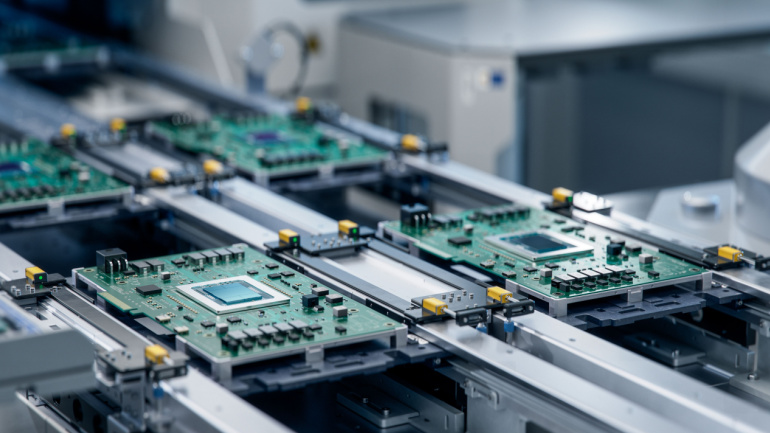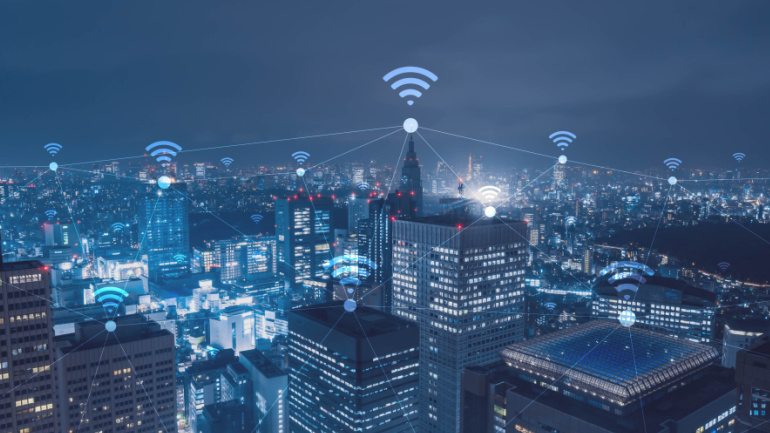In a bid to level up its national network capabilities, Swisscom has partnered with Nokia to breathe life into its Next Evolution Wavelength Transport Optical Network (NEWTON). This cutting-edge network is designed to deliver high performance, cost efficiency, and an elevated customer experience. Amid the increased demand for robust support from remote workforces to cloud computing, Swisscom turned to Nokia’s comprehensive range of optical networking solutions, a move that saw a significant upgrade which included the launch of 22 backbone sites and 560 metro sites.
IDC predicts a promising future for the semiconductor industry, driven by AI advancements and a stock level recovery. With a refreshed outlook signaling sustainable growth, the firm anticipates global chip revenue of $526.5 billion in 2023. Progress can be seen in the revised revenue forecast for 2024, hinting at a 20.2% year-on-year growth to $633 billion.
In the face of declining shares, Vodafone’s bold recovery strategy is underway. The shift from a net profit to a loss has been attributed to several factors including missing operations, adverse foreign exchange movements, and losses from joint ventures. Nonetheless, CEO Margherita Della Valle is leading a restoration plan that includes improving customer service and expanding Vodafone Business.
In a sharp escalation of theft incidents, Philippines operator Globe reported a loss of 834 backup batteries from their network facilities in 2022’s first half. This, they outline, puts localities at risk of service interruptions during power cuts. This surge may be associated with the modern, high-value sodium nickel batteries introduced by Globe. However, it’s more likely tied to the nation’s steep energy prices and increased cost of living. In the face of these challenges, telco operators must devise robust security measures while continuing to innovate on environmental fronts.
The allure of AI technology and its insatiable demand for data is sparking a new interest in fibre backbones. However, this digital evolution is revealing a myriad of challenges for newcomers, with the fibre industry grappling with economic pressures from inflation, supply chain disruptions and rising interest rates. While the European Union’s telecom mergers & acquisitions policy may offer consolidation opportunities, those venturing into this dynamic sector must be prepared for a landscape fraught with potent risk and complexity.
With a myriad of options available, choosing the right SIP trunking provider can be daunting. That’s why we’ve compiled a comprehensive list of the top 10 best SIP trunking providers. This article provides an overview of key features, reliability, scalability, customer support, and pricing models. It gives you the necessary information to make an informed decision to transform your business communication infrastructure with this information.
An enthusiastic exploration of advancing telecommunication technologies, particularly 5G and its bigger sibling, 5.5G, was recently exhibited by Huawei’s Antenna Business Unit President, Eric Zhao. Eric emphasizes how competent R&D pursuits are imperative to propel antenna performance, a critical aspect in 5.5G proliferation. He highlights the enhancement of user experience, operational efficiency and service extension as key objectives. Moreover, Huawei’s strides in working towards the goals of unrestricted deployment, zero signal loss, and ‘zero touch’ O&M demonstrate their ambition. Yet, the journey towards these ambitious targets is far from over.
Under the Online Safety Act, UK’s telecoms regulator Ofcom, gears up to reinforce online safety, focusing on protecting vulnerable users, especially children. Their proposed laws call for tech firms’ accountability, ensuring a thorough content governance to curb harmful material. They seek stakeholder feedback on their initial codes against illegal harms online, marking the end of harmful content and the dawn of user safety.
In a push for universal cybersecurity standards, the EU faces backlash from global telecommunications titans like Ericsson and Nokia, who warn of supply chain disruptions akin to those experienced during COVID-19. Striking a balance between stringent security measures and smooth product availability is crucial, prompting these industry leaders to suggest increased self-assessment and more lenient implementation timeframes. However, the underpinning question remains – who should ensure industry compliance, the vendors or third parties? Amidst the surge in cybercrime, a secure, streamlined approach is paramount.
Navigating controversy and complex negotiations, Rogers Communications’ acquisition of Shaw Communications, perhaps unexpectedly, resulted in significant job cuts. Amidst skepticism and fears of further layoffs, Rogers remains steadfast in their stance, insisting on their commitment to job creation. However, the telecommunications landscape is a convoluted jigsaw, and this merger has merely revealed another challenging piece.













